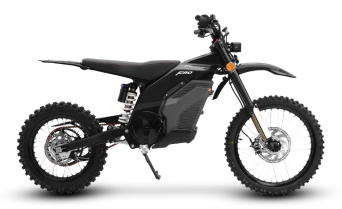Electric Dirt Bikes: The Eco-Friendly Choice for a Sustainable Ride
Embrace Sustainability with Electric Dirt Bikes
Thinking about getting an electric bike, perhaps an electric dirt bike? It’s good to consider the environmental effects of your choices. Electric dirt bikes have transformed off-roading in recent years6. A key benefit is that they produce zero tailpipe emissions, making them a much greener alternative for our planet6.Traditional gas-powered vehicles create a lot of pollution. For every gallon of gasoline burned, around 20 pounds of CO2 are released. This significantly contributes to climate change.
The Benefits of Electric Dirt Bikes
- Zero Emissions: Electric dirt bikes don’t release tailpipe emissions into the atmosphere like traditional gas vehicles3. This can significantly reduce air pollution, particularly in urban areas.
- Reduced Noise Pollution: They operate much more quietly, helping to create quieter environments3. This is a big plus for both urban and natural settings.
- Lower Maintenance: With fewer moving parts, electric dirt bikes generally require less maintenance and have lower running costs.
- Enhanced Riding Experience: Electric dirt bikes like the Caofen FX deliver instant torque and eliminate the need for gear shifting. This makes them easier and more enjoyable to ride, especially when off-roading.
- Regenerative Braking: Some models even recharge the battery during braking. This extends the range and overall efficiency.
Choosing an electric dirt bike is a step towards a greener lifestyle and helps reduce your impact on the environment. You’re actively contributing to a more sustainable world.
Several electric dirt bike models are redefining the off-road experience. Here are a few examples:
Spotlight on Models: Features and Performance
- Caofen FX :This electric motorcycle is designed for both on and off-road adventures. It’s powered by a mid-mounted 11kW motor and a 72V 60Ah liquid-cooled battery1. The Caofen FX boasts impressive acceleration and can reach speeds up to 53 mph. Its battery system is housed in a magnesium alloy casing and features an advanced Battery Management System, supplementary heating, and flame-resistant oil cooling for stability and extended battery life. The frame is crafted from Magnarium, a specialized magnesium-aluminum alloy, for increased rigidity2.
- KTM Freeride E-XC: Originally designed as a lightweight gas-powered machine, the Freeride E-XC uses a unique chassis with a chrome-molybdenum frame and bolt-on aluminum subframes. Its compact 18 kW motor keeps the bike slim and the center of gravity low. It has three selectable riding modes, and the battery can last between 90 minutes and 3 hours.
- Surron Lightbee X 60v: The Lightbee weighs only 123 pounds and has an electric motor producing 28.7 pound-feet of torque. Its removable 60V 32Ah battery can be charged in less than four hours.
Environmental Considerations: Manufacturing and Lifecycle
While electric dirt bikes offer significant advantages, it’s important to consider their entire lifecycle, including manufacturing and disposal34.
- Manufacturing Footprint: The production of e-bikes, including electric dirt bikes, involves energy-intensive processes and the use of materials like lithium, cobalt, and nickel for batteries. Manufacturing an e-bike emits around 134kg CO2e, compared to 96kg CO2e for a regular bike. Efforts are being made to improve the energy efficiency of manufacturing and increase the use of renewable energy4.
- Battery Lifespan and Disposal: E-bike batteries have a limited lifespan, and their disposal poses environmental challenges due to hazardous materials. Advancing recycling technologies for e-bike components, especially batteries, is crucial to reduce their overall environmental footprint4.
- Electricity Source: The environmental friendliness of charging an electric dirt bike depends on the source of electricity3. If the electricity comes from renewable sources like solar power, the overall impact is further reduced.
Electric vs. Gas: A Quick Comparison
| Feature | Electric Dirt Bike | Traditional Gasoline-Powered Vehicle |
| 1. Emissions | Zero | Approximately 20 pounds of CO2/gallon |
| 2. Noise Pollution | Reduced | Higher |
IMBA Study on Trail Impact
A study by the International Mountain Bicycling Association (IMBA) compared the environmental impacts of traditional mountain bikes, Class 1 electric mountain bikes, and motorcycles. The study found that soil displacement and tread disturbance from Class 1 eMTBs and traditional mountain bikes were not significantly different. Both were much less than those associated with a gasoline-powered motorcycle5. This suggests that electric dirt bikes, particularly those with power assist, have a similar impact on trails as traditional mountain bikes1.
In conclusion, electric dirt bikes represent a significant improvement over traditional dirt bikes in terms of environmental impact. The lack of emissions, reduced noise, and potential for lower maintenance needs make them an appealing choice. While manufacturing and battery disposal require consideration, ongoing efforts to improve sustainability are promising3. When you choose an electric bike, you’re making a responsible decision that benefits the planet6. Consider exploring Caofen electric motorcycle models for a sustainable riding experience.

Waterproof Electric Motorcycles: Caofen F80
Explore the waterproof capabilities of electric motorcycles, focusing on the Caofen F80 with its IP67 rating.
Mar 05 2025
Top Electric Motorcycles 2025
Discover the best electric motorcycles of 2025, from Caofen FX to SurRon and Harley-Davidson.
Feb 27 2025
